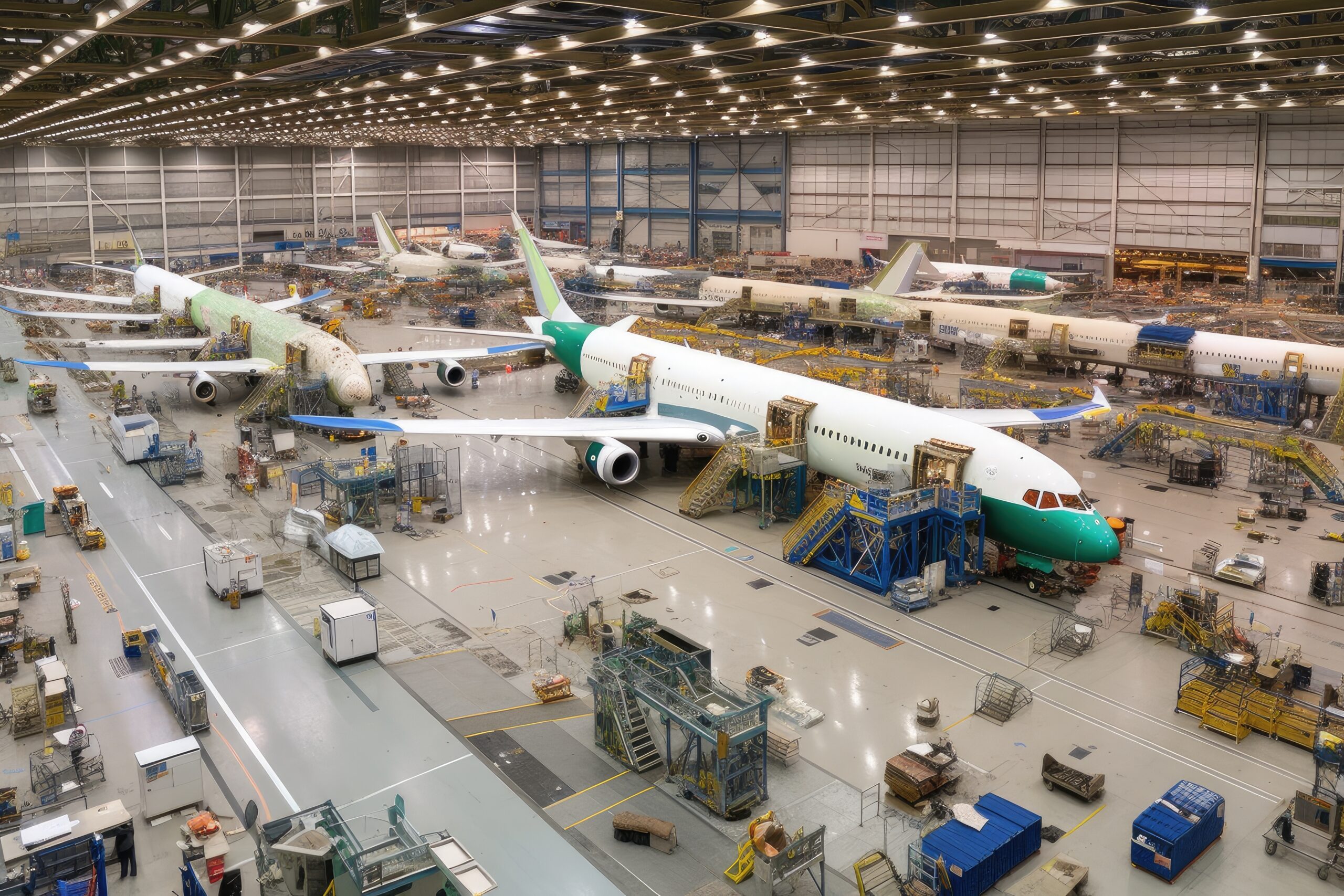Simio Aerospace, a manufacturer of commercial airliners, is evaluating planned changes to their final assembly systems. Their process line has multiple workstations, each with a statement of work consisting of 5 to 20 aggregated tasks. Each task has unique requirements for labor, tools and material handling. The current system is schedule driven, so any work not completed at the time the line pulses will be “traveled” downstream since airplanes simply go from one location to the next according to the cycle time, regardless of whether all the work is finished by the specified time. Evaluating alternative production policies regarding this traveled work is objective for this case study. The manufacturing process is labor-intensive, and Work in Process (WIP) is costly. Therefore, process improvement in the areas of labor productivity and reduction of WIP is critical.
Simio Aerospace – Fall 2024
DATE
August 2024
Summary
Additional Details
Develop a Simio model that uses Task Sequences to implement the work requirements for each plane at each of the five work cells. Assume that planes can only move out of a work cell when the tasks for that cell are complete (i.e., no traveled work). Use this model to analyze the following cases:
- Where there is no space for planes between work cells (i.e., zero capacity input and output buffers)
- Where there is space for one plane between work cells
- Where there is space for unlimited planes between work cells
- Where each work cell can work on up to two planes simultaneously (i.e., capacity = 2) and there is no space for planes between work cells.
Your analysis should consider the following metrics:
- Cycle time (defined as the time between successive plane completions – the inter-departure time).
- Completion time for the batch – initially 75 planes, and when the SA103 is introduced, 100 planes.
- Workforce utilization
- WIP
- Blocking and starving at each work cell
